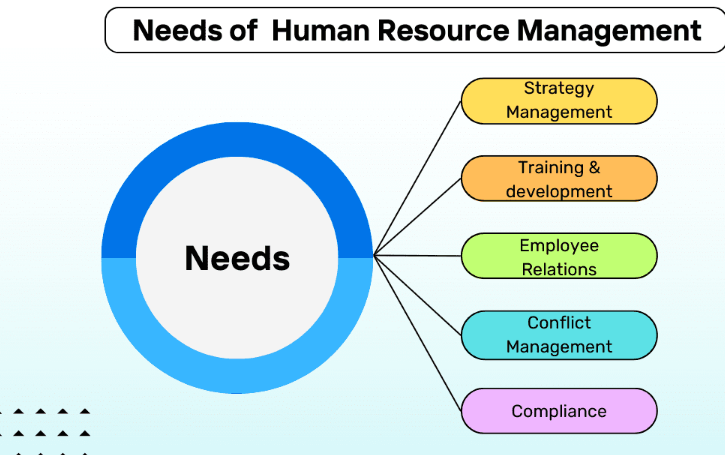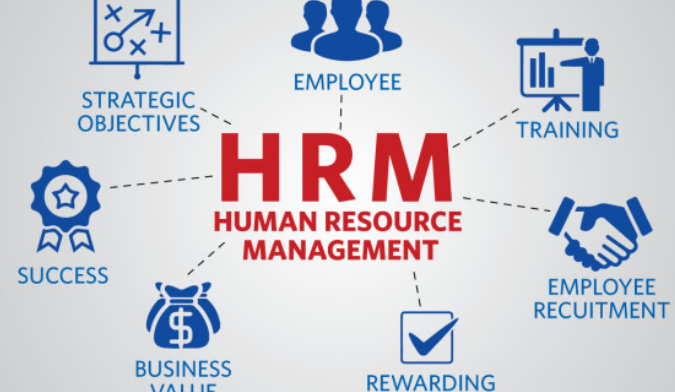Human Resource Management (HRM) plays a critical role in any industry, and the insurance industry is no exception. The insurance sector, with its focus on risk management, customer service, and complex regulatory requirements, relies heavily on its workforce to deliver quality services and achieve organizational success. HRM in the insurance industry ensures that companies attract, develop, and retain talented individuals who can meet the demands of this competitive sector. In this article, we explore the importance of HRM within the insurance industry, covering its role in talent acquisition, employee development, performance management, compliance, and organizational culture.
1. Talent Acquisition and Recruitment
One of the primary functions of HRM in the insurance industry is talent acquisition. Recruiting the right individuals is essential to the success of any insurance company, as the industry demands highly skilled professionals with expertise in areas such as underwriting, claims processing, actuarial science, and customer service. The HR department is responsible for identifying, attracting, and hiring employees who possess the skills and knowledge required to meet these specialized roles.
1.1 Industry-Specific Recruitment Strategies
Insurance companies often require employees with unique qualifications, such as insurance licenses, certifications, and specialized training. HRM teams must develop industry-specific recruitment strategies to identify candidates who meet these criteria. This involves advertising job openings in industry-specific platforms, attending career fairs focused on the financial and insurance sectors, and building relationships with educational institutions that offer insurance-related programs.
Moreover, HR professionals in the insurance industry often collaborate with department heads to ensure that job descriptions are tailored to attract candidates with the necessary skills. They must also ensure that recruitment efforts align with the company’s long-term business goals, which may involve sourcing talent with knowledge of emerging areas such as digital transformation, insurtech, and data analytics.
1.2 Talent Pool Management
In addition to recruiting new employees, HRM must manage the talent pool to ensure that there is a pipeline of qualified candidates ready to fill critical roles as they become available. The insurance industry faces significant challenges in retaining talent, particularly as older employees retire and younger workers seek more dynamic and flexible career opportunities. Effective HRM involves creating programs to attract and retain millennial and Gen Z workers, who may have different expectations regarding career development, work-life balance, and corporate culture.
2. Employee Development and Training
Once the right talent has been acquired, HRM is responsible for employee development and training. The insurance industry is highly regulated and constantly evolving, which means that employees must stay up-to-date with the latest regulations, technologies, and industry trends. Training programs are crucial to ensuring that staff remain knowledgeable and capable of performing their roles effectively.
2.1 Ongoing Professional Development
One of the key areas where HRM adds value in the insurance industry is through the development of comprehensive training programs that focus on both technical skills and soft skills. For instance, underwriters, actuaries, and claims adjusters must continually update their technical knowledge to comply with changing regulatory requirements and to use new software systems effectively. In addition, sales and customer service staff require continuous training to improve their communication skills, negotiation techniques, and customer interaction capabilities.
HRM plays a pivotal role in identifying the training needs of employees and developing tailored programs that enhance their skills. Many insurance companies invest in certification programs, online learning platforms, and mentorship opportunities to provide employees with the tools they need to advance in their careers.

2.2 Leadership Development
Leadership development is another critical aspect of HRM in the insurance industry. As companies grow and evolve, there is a constant need for capable leaders who can drive innovation, manage teams, and ensure that business objectives are met. HRM is responsible for identifying high-potential employees and providing them with opportunities for leadership development. This may include offering leadership training courses, creating succession planning initiatives, and implementing mentoring programs that help groom future leaders from within the organization.
By fostering a culture of leadership development, HRM not only ensures the sustainability of the company’s leadership pipeline but also contributes to employee retention and engagement, as employees are more likely to remain with an organization that invests in their growth.
3. Performance Management and Employee Engagement
HRM plays a crucial role in managing employee performance and ensuring that employees are motivated to perform at their best. In the insurance industry, where accuracy, compliance, and customer satisfaction are paramount, effective performance management is essential to maintaining high standards of service and operational efficiency.
3.1 Setting Clear Expectations
HRM is responsible for establishing clear performance expectations for employees and ensuring that these expectations align with the company’s overall objectives. In the insurance industry, this involves creating performance metrics that assess key areas such as policy underwriting accuracy, claims processing efficiency, and customer satisfaction levels. Clear performance expectations help employees understand what is required of them and how their work contributes to the success of the organization.
3.2 Performance Appraisal and Feedback
Regular performance appraisals are a core function of HRM. These evaluations provide employees with constructive feedback on their performance, identify areas for improvement, and highlight achievements. In the insurance industry, performance appraisals may also be tied to regulatory compliance, ensuring that employees are meeting industry standards and adhering to ethical guidelines.
HRM teams are responsible for implementing fair and transparent performance appraisal systems that motivate employees to improve and reward those who excel in their roles. By providing regular feedback and recognition, HRM helps to boost employee morale and engagement, which in turn improves overall organizational performance.
3.3 Employee Engagement Initiatives
Employee engagement is a significant challenge in the insurance industry, where work can sometimes feel repetitive and bureaucratic. HRM is tasked with creating programs that foster engagement and motivation among employees. This can include offering wellness programs, flexible work arrangements, team-building activities, and recognition initiatives that make employees feel valued and connected to the company’s mission.
Engaged employees are more likely to provide excellent customer service, contribute to a positive work environment, and remain with the organization long-term. By prioritizing employee engagement, HRM helps insurance companies reduce turnover rates and enhance overall productivity.
4. Compliance and Risk Management
The insurance industry is one of the most heavily regulated sectors, with strict guidelines governing everything from data privacy to financial reporting. HRM plays a critical role in ensuring that the company complies with all relevant laws and regulations, particularly in areas such as employment law, health and safety, and equal opportunity.
4.1 Compliance with Employment Laws
HRM professionals must ensure that the company adheres to employment laws at the local, national, and international levels. This includes compliance with wage and hour laws, anti-discrimination regulations, and workplace safety standards. In the insurance industry, where compliance with financial regulations is paramount, HRM also works closely with legal and compliance teams to ensure that employees follow the rules governing insurance sales, claims processing, and data handling.
4.2 Risk Management
HRM is also involved in risk management from an internal perspective. This includes managing risks related to employee behavior, workplace conflicts, and potential legal disputes. HRM develops policies and procedures to address these risks, including anti-harassment policies, grievance procedures, and employee conduct guidelines.
Moreover, HRM plays a key role in ensuring that the company’s workforce is adequately prepared to handle external risks, such as cybersecurity threats and data breaches, which are becoming increasingly prevalent in the digital age. By developing training programs that raise awareness of these risks and implementing policies to mitigate them, HRM helps protect the company from financial and reputational damage.
5. Diversity and Inclusion in the Insurance Industry
Diversity and inclusion (D&I) have become central to HRM strategies in many industries, including insurance. A diverse workforce brings a variety of perspectives, experiences, and ideas that can enhance problem-solving, innovation, and customer service. In the insurance industry, where understanding the diverse needs of clients is essential to providing personalized coverage, fostering diversity within the workforce is particularly important.
5.1 Promoting Diversity in Recruitment
HRM teams in the insurance industry are tasked with creating recruitment strategies that attract candidates from diverse backgrounds. This involves developing inclusive job descriptions, partnering with organizations that support underrepresented groups, and ensuring that recruitment processes are free from bias.

5.2 Building an Inclusive Workplace Culture
HRM is also responsible for cultivating an inclusive workplace culture where employees feel valued and respected, regardless of their background. This can be achieved through diversity training programs, employee resource groups, and company-wide initiatives that promote inclusion. By fostering a culture of inclusivity, HRM helps insurance companies build a workforce that is more engaged, innovative, and reflective of the diverse client base they serve.
6. Adapting to Technological Change
The insurance industry is undergoing significant technological transformation, driven by the rise of insurtech, data analytics, artificial intelligence (AI), and automation. These advancements are changing the way insurance companies operate, from policy underwriting to customer service. HRM plays a vital role in helping insurance companies adapt to these technological changes by ensuring that employees have the skills and knowledge needed to thrive in a tech-driven environment.
6.1 Reskilling and Upskilling Initiatives
As automation and AI take over routine tasks, HRM must develop reskilling and upskilling programs to prepare employees for more complex roles that require critical thinking, problem-solving, and technical expertise. For example, insurance agents may need to learn how to use AI-powered tools to assess customer needs, while underwriters may require training in data analytics to make more informed decisions.
By investing in employee development and embracing technological change, HRM helps insurance companies remain competitive in a rapidly evolving industry.
7. Conclusion
Human Resource Management is a critical function within the insurance industry, playing a vital role in attracting, developing, and retaining talent, managing employee performance, ensuring compliance, and fostering a diverse and inclusive workplace. As the insurance industry continues to evolve in response to regulatory changes, technological advancements, and shifting customer expectations, HRM will remain essential to ensuring that companies have the workforce and organizational culture needed to succeed. Through effective HRM practices, insurance companies can navigate the challenges of the modern business environment, drive innovation, and deliver superior service to their clients.
